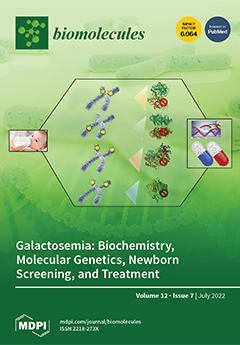Open AccessArticle
Infection Rate of Respiratory Viruses in the Pandemic SARS-CoV-2 Period Considering Symptomatic Patients: Two Years of Ongoing Observations
by
Gaetana Costanza, Pierpaolo Paba, Marco Ciotti, Domenico Ombres, Stefano Di Carlo, Fabbio Marcuccilli, Ada Bertoli, Loide Di Traglia, Marcello Mozzani, Lucia Piredda, Vita Petrone, Marialaura Fanelli, Carla Paganelli, Barbara Cortese, Emanuela Balestrieri, Sergio Bernardini, Massimo Andreoni, Claudia Matteucci, Antonella Minutolo and Sandro Grelli
Cited by 5 | Viewed by 2405
Abstract
Background: In the last two years, the SARS-CoV-2 pandemic has determined radical changes in human behaviors and lifestyles, with a drastic reduction in socialization due to physical distancing and self-isolation. These changes have also been reflected in the epidemiological patterns of common respiratory
[...] Read more.
Background: In the last two years, the SARS-CoV-2 pandemic has determined radical changes in human behaviors and lifestyles, with a drastic reduction in socialization due to physical distancing and self-isolation. These changes have also been reflected in the epidemiological patterns of common respiratory viruses. For this reason, early discrimination of respiratory viruses is important as new variants emerge. Methods: Nasopharyngeal swabs of 2554 patients, with clinically suspected Acute Respiratory Infections (ARIs) from October 2019 to November 2021, were collected to detect 1 or more of the 23 common respiratory pathogens, especially viruses, via BioFilmArray RP2.1
plus, including SARS-CoV-2. Demographical characteristics and epidemiological analyses were performed as well as a laboratory features profile of positive patients. Results: An observational study on 2300 patients (254 patients were excluded because of missing data) including 1560 men and 760 women, median age of 64.5 years, was carried out. Considering the respiratory virus research request, most of the patients were admitted to the Emergency Medicine Department (41.2%, of patients), whereas 29.5% were admitted to the Infectious Diseases Department. The most frequently detected pathogens included SARS-CoV-2 (31.06%, 707/2300, from March 2020 to November 2021), InfA-B (1.86%, 43/2300), HCoV (2.17% 50/2300), and HSRV (1.65%, 38/2300). Interestingly, coinfection rates decreased dramatically in the SARS-CoV-2 pandemic period. The significative decrease in positive rate of SARS-CoV-2 was associated with the massive vaccination. Conclusion: This study represents a dynamic picture of the epidemiological curve of common respiratory viruses during the two years of pandemic, with a disregarded trend for additional viruses. Our results showed that SARS-CoV-2 had a preferential tropism for the respiratory tract without co-existing with other viruses. The possible causes were attributable either to the use of masks, social isolation, or to specific respiratory receptors mostly available for this virus, external and internal lifestyle factors, vaccination campaigns, and emergence of new SARS-CoV-2 variants.
Full article
►▼
Show Figures






